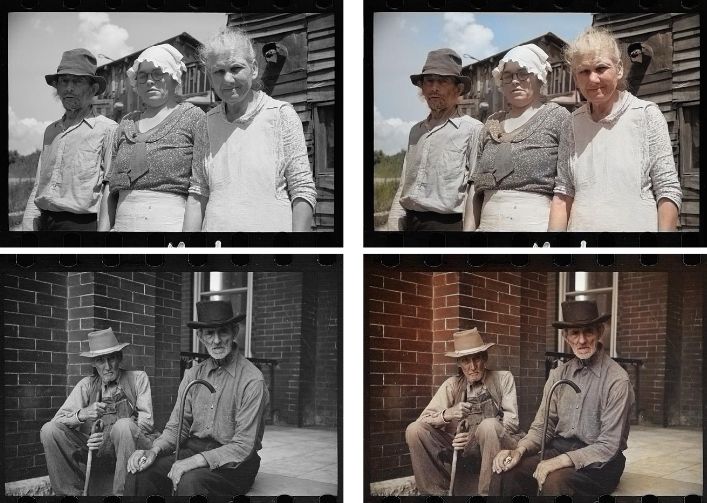In the realm of digital imaging, the art of image colorization stands as a fascinating intersection of creativity and technology. It involves imbuing black and white or monochrome images with vibrant, lifelike colors, breathing new life into historical photographs or adding depth to contemporary visuals. What was once a painstaking manual process reserved for skilled artists has now been revolutionized by advancements in artificial intelligence and machine learning algorithms.
At its core, image colorization is a process that requires an understanding of both the artistic intent behind the original image and the technical nuances of color theory and image processing. Historically, artists would meticulously hand-paint monochrome photographs using various mediums such as watercolors or oils, relying on their intuition and artistic expertise to recreate realistic colors. While this method yielded impressive results, it was time-consuming and required a high level of skill.
The advent of digital imaging technologies brought about significant changes to the field of image colorization. Software tools like Adobe Photoshop introduced automated colorization features, allowing users to apply color to black and white images with relative ease. However, these early methods often produced unsatisfactory results, lacking the nuance and accuracy of manually applied colors.
Enter artificial intelligence and machine learning. In recent years, researchers have developed sophisticated algorithms capable of analyzing grayscale images and predicting appropriate colorizations based on vast datasets of colored images. These algorithms leverage deep learning techniques, particularly convolutional neural networks (CNNs), to learn the complex relationships between grayscale input and corresponding colorized output.
One of the key challenges in image colorization is understanding the context and semantics of the image content. For instance, the algorithm must discern between different objects, textures, and lighting conditions to apply realistic colors accurately. To address this challenge, researchers have developed CNN architectures with specialized modules for semantic segmentation, enabling the algorithm to identify and classify different elements within the image before applying colors selectively.
Furthermore, color consistency and coherence play crucial roles in producing visually pleasing results. A colorized image should exhibit realistic shading, highlights, and color gradients that align with the principles of natural lighting and color theory. Achieving this level of fidelity requires careful calibration of the algorithm’s parameters and training on diverse datasets encompassing a wide range of visual styles and scenarios.
The applications of image colorization are manifold and extend beyond mere aesthetic enhancement. In historical preservation, colorized photographs offer a fresh perspective on bygone eras, allowing viewers to connect more intimately with the past. By infusing color into archival images, historians and researchers can uncover new details and insights that were previously obscured by the limitations of monochrome photography.
Moreover, image colorization has practical applications in fields such as design, advertising, and cinematography. By visualizing prototypes or concepts in color, designers can convey their ideas more effectively and elicit stronger emotional responses from audiences. In advertising, colorized imagery can enhance brand identity and create memorable visual experiences that resonate with consumers.
In conclusion, image colorization represents a captivating fusion of artistry and technology, offering endless possibilities for creative expression and historical exploration. As artificial intelligence continues to advance, we can expect further refinement and innovation in this field, unlocking new ways to reimagine the past and enrich the visual landscape of the present.




